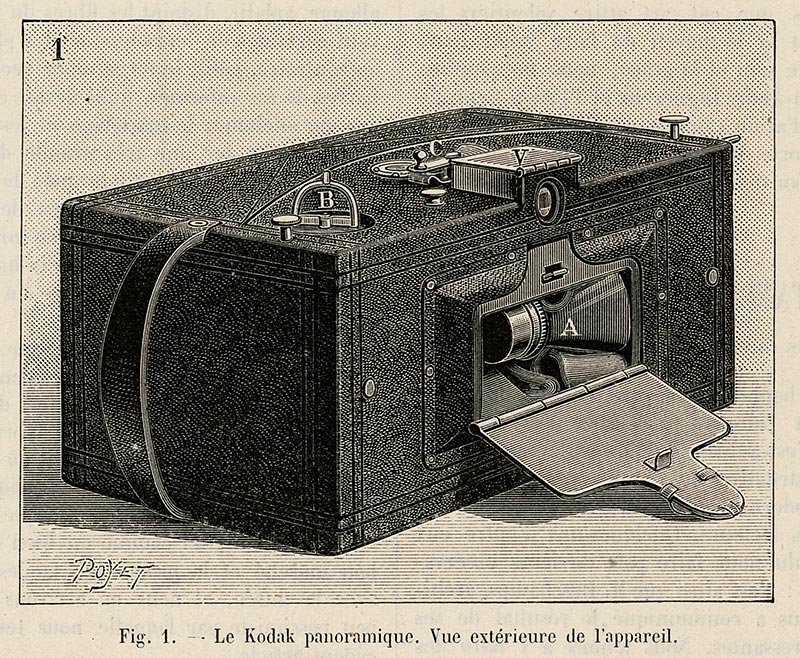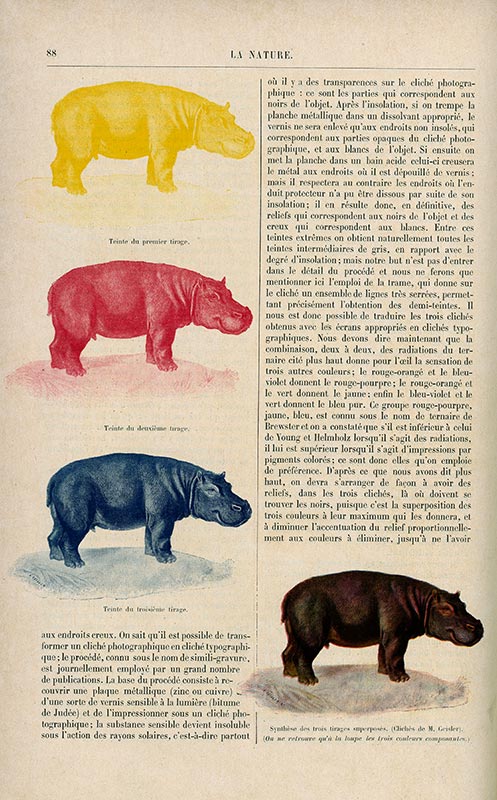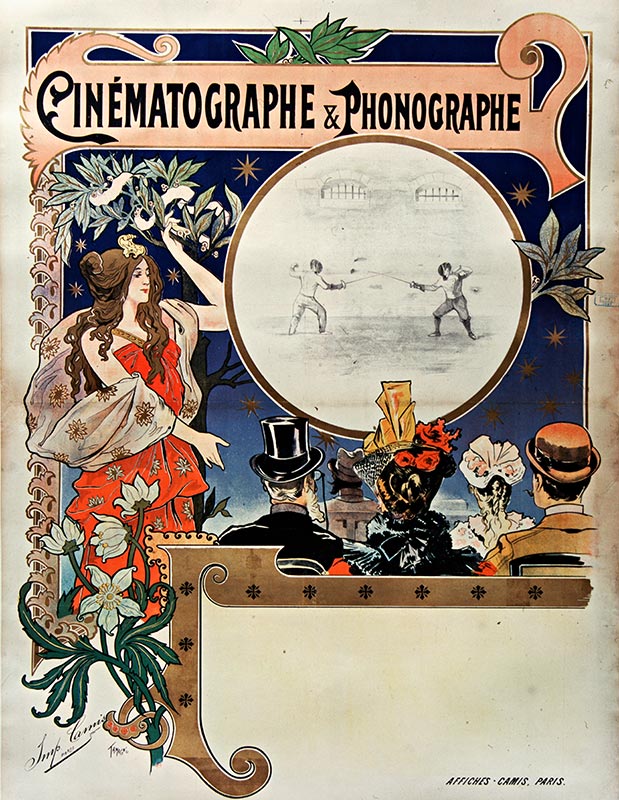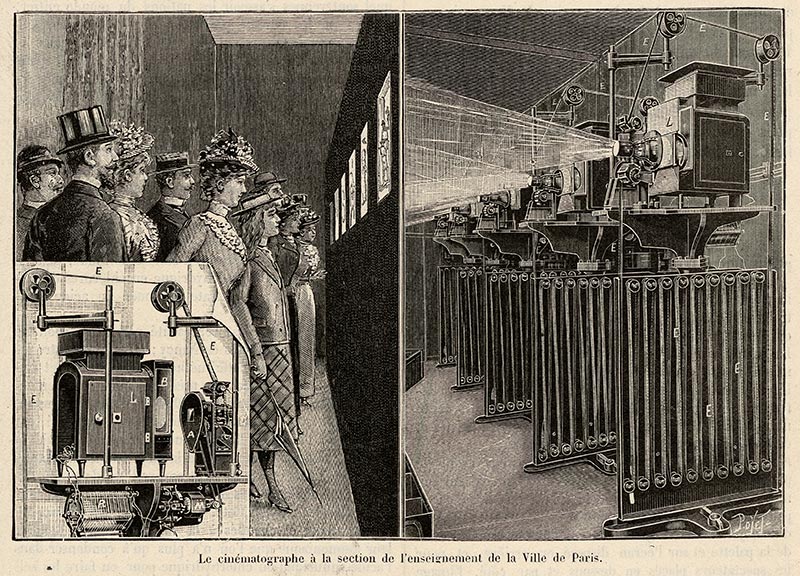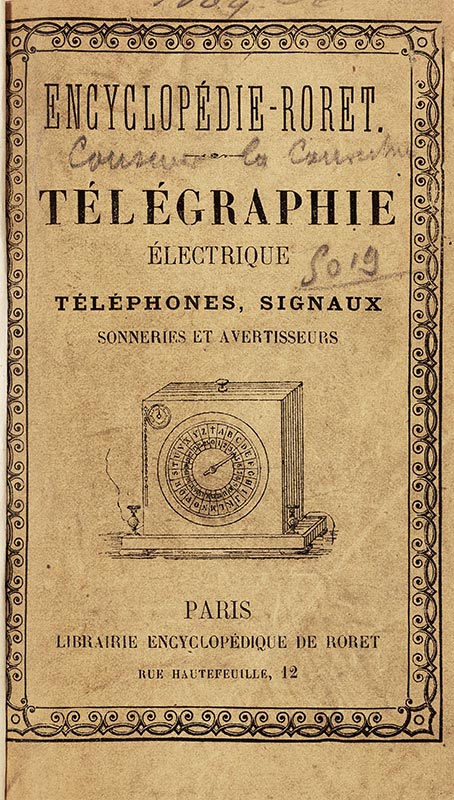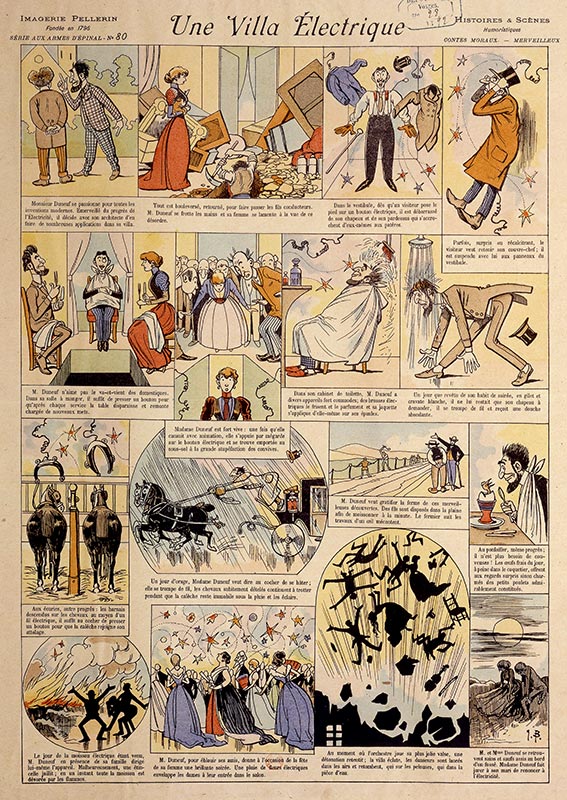Electricity and New Means of Communication
“No, Sirs! Not only is the candlestick telephone a marvelous scientific device, but its low price, solid construction, rapid installation, ease of use, and the infinite services it will render put it in the forefront of truly practical modern discoveries.”
Tribune des inventeurs (Inventors’ Tribune), 1891, advertisement
Photography, a history in pictures, excerpts from the Série encyclopédique des leçons de choses illustrées
(Encyclopedic Series of Illustrated Practical Lessons), Imagerie Pellerin, [1884].
Photography, a history in pictures, excerpts from the Série encyclopédique des leçons de choses illustrées
(Encyclopedic Series of Illustrated Practical Lessons), Imagerie Pellerin, [1884].
In the 19th century, technology related to images and communication (photography, cinema, telephone and telegraph) was developed and quickly became widespread. Invented by Nicéphore Niépce and Louis Daguerre,
photography soon attracted many innovations. In 1898, Kodak began marketing a folding pocket camera, and in 1900, they introduced a panoramic camera, the No. 1 Kodak Panoram.
Louis Ducos du Hauron was the pioneer when it came to three-color photographic printing. The cinema’s earliest successes were thanks to Thomas Edison, the inventor of the phonograph, who also developed the Kinetograph and the Kinetoscope.
But starting in 1895, the Lumière brothers perfected the invention, to which they gave the name Cinématographe 30, and introduced it to a broad public.
As for communication, the telephone, invented by Alexander Graham Bell, was introduced in France by Clément Ader, an aviation pioneer. The system comprised a microphone and two earphones.
The device also required two batteries composed of a glass bottle filled with electrolyte and connected electrodes for it to work.
Like the telegraph and pneumatic tube lines, the telephone developed as a means of communication in the late 19th century.
These inventions were explained in detail in magazines like La Nature (Nature) and other popular-science publications, as well as in more technical books, like Roret manuals.
That collection created by Nicolas-Edme Roret in 1822 comprised more than 315 volumes devoted to all sorts of trades, including one about electric telegraphy.
Modern technologies, like electricity and photography, appeared frequently in the books, whose small format made it easy to slip them into your pocket!


